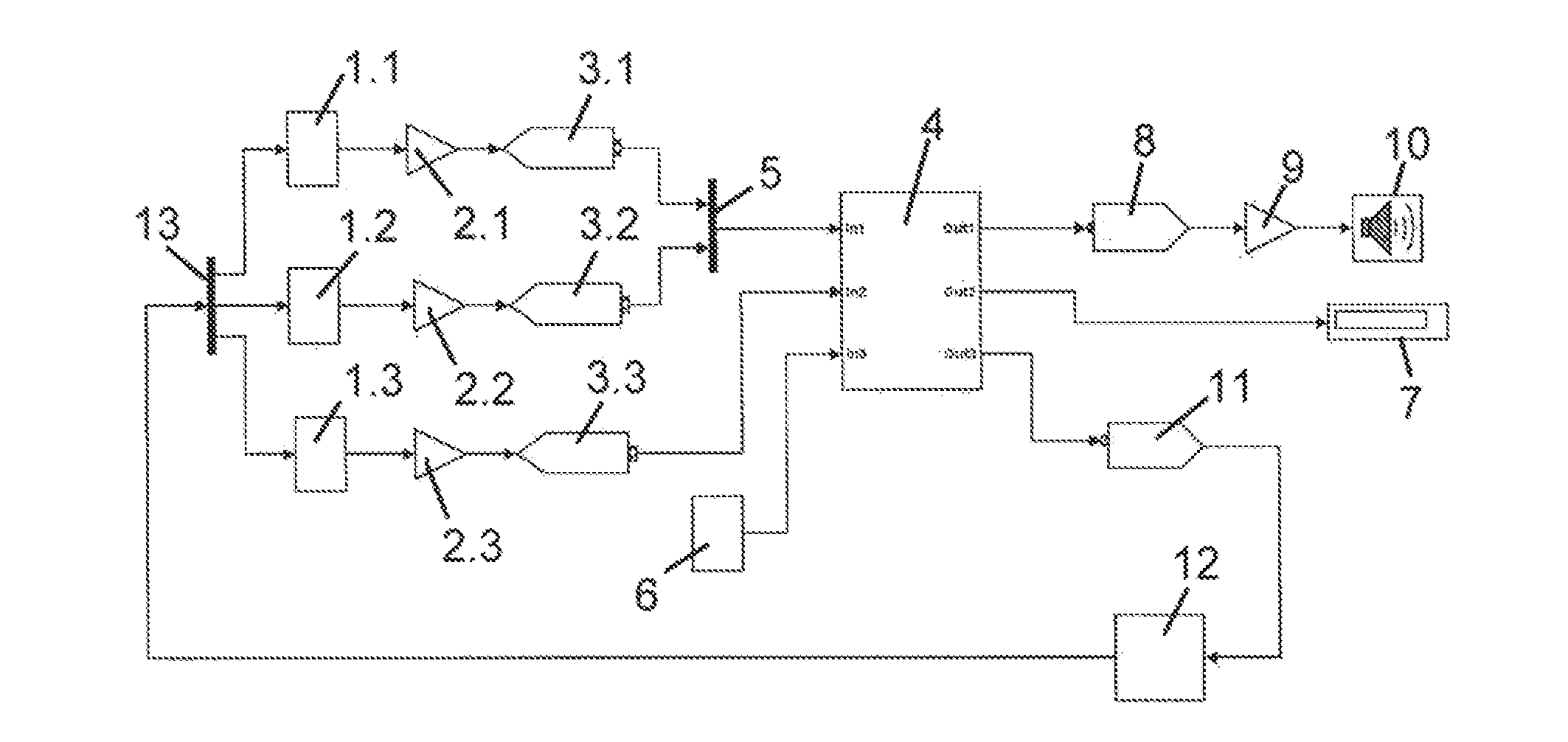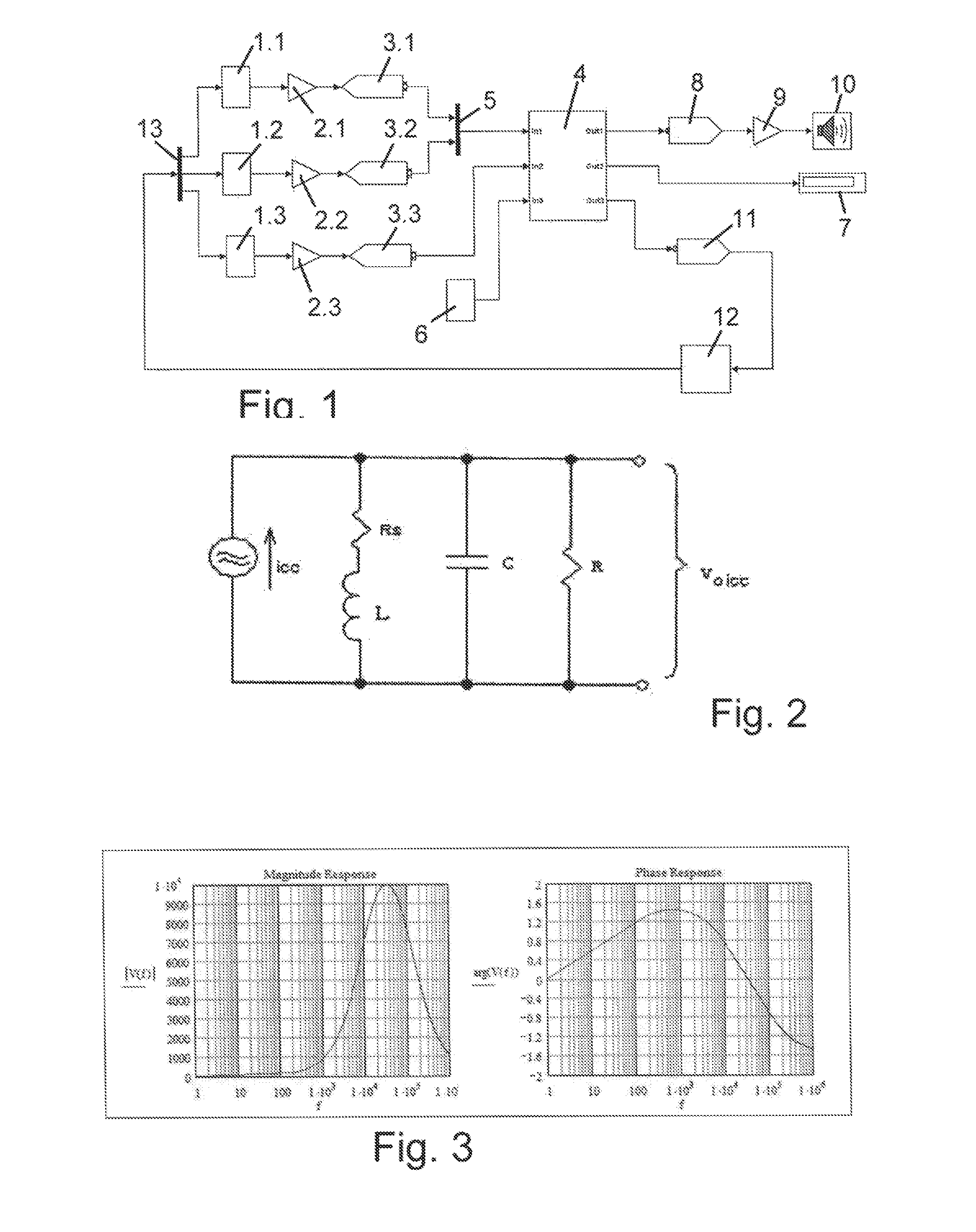Locator self-test
a self-testing and locator technology, applied in the field of locator self-testing, can solve the problems of reducing the sensitivity and accuracy of differential measurements, affecting the accuracy of locators, and affecting the reliability of locators, so as to improve detection accuracy, reduce hardware requirements, and increase detection speed
- Summary
- Abstract
- Description
- Claims
- Application Information
AI Technical Summary
Benefits of technology
Problems solved by technology
Method used
Image
Examples
Embodiment Construction
[0035]Some embodiments of the present invention seek to provide a new and inventive self-test system which allows the sensors and their associated electronics to be analyzed such that the channels can be balanced to a very high precision.
[0036]Referring firstly to FIG. 1, the main components of the cable locator are shown by way of example, but it will be appreciated that detection apparatus in accordance with some embodiments of the invention may include additional features and components, for example a GPS receiver. In this example the cable locator has three magnetic sensors 1.1, 1.2 and 1.3 in the form of conventional low frequency ferrite-cored antennas designed for maximum sensitivity and low noise. The signals from the windings of the three antennas are sent to respective pre-amplifiers 2.1, 2.2 and 2.3 which (i) ensure that the sensor noise dominates the ADC quantization noise by about +6 dB, and (ii) have a transfer function which normalizes the antenna response as a functi...
PUM
 Login to View More
Login to View More Abstract
Description
Claims
Application Information
 Login to View More
Login to View More - R&D
- Intellectual Property
- Life Sciences
- Materials
- Tech Scout
- Unparalleled Data Quality
- Higher Quality Content
- 60% Fewer Hallucinations
Browse by: Latest US Patents, China's latest patents, Technical Efficacy Thesaurus, Application Domain, Technology Topic, Popular Technical Reports.
© 2025 PatSnap. All rights reserved.Legal|Privacy policy|Modern Slavery Act Transparency Statement|Sitemap|About US| Contact US: help@patsnap.com



